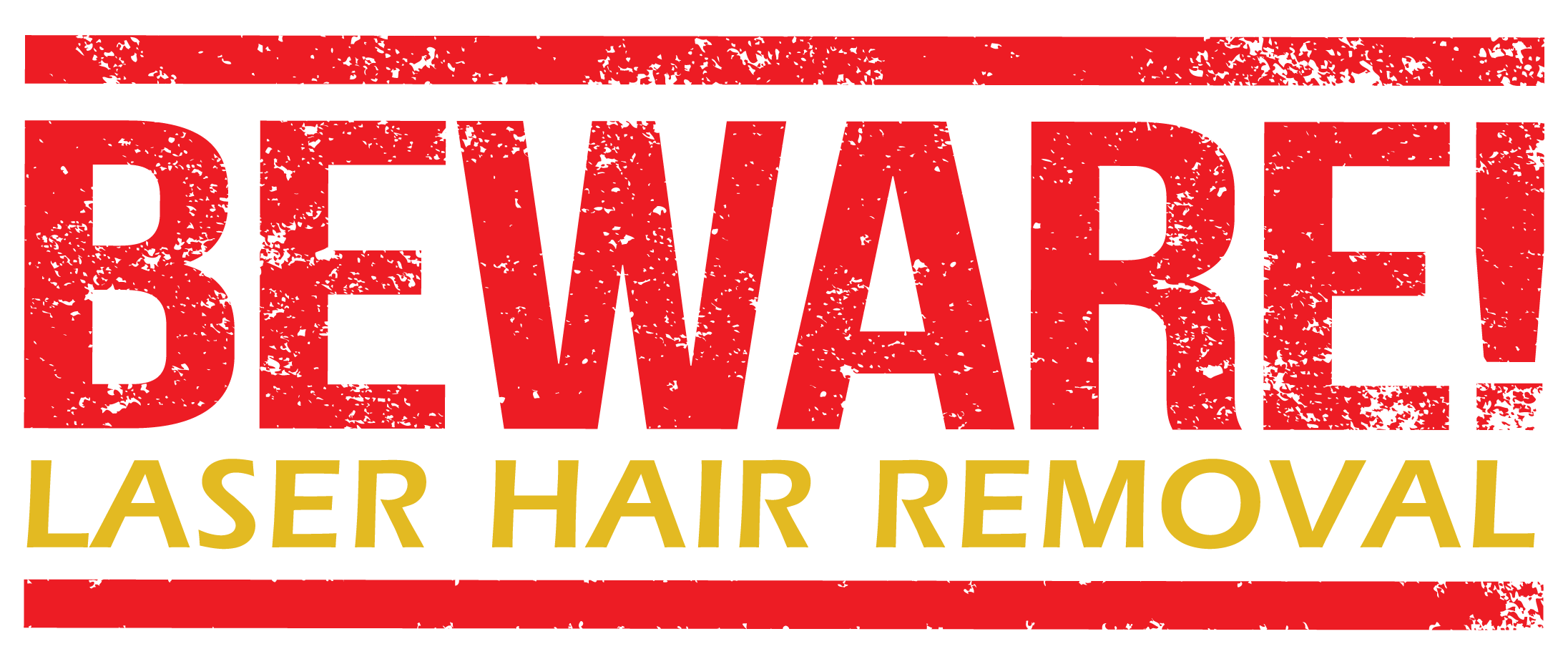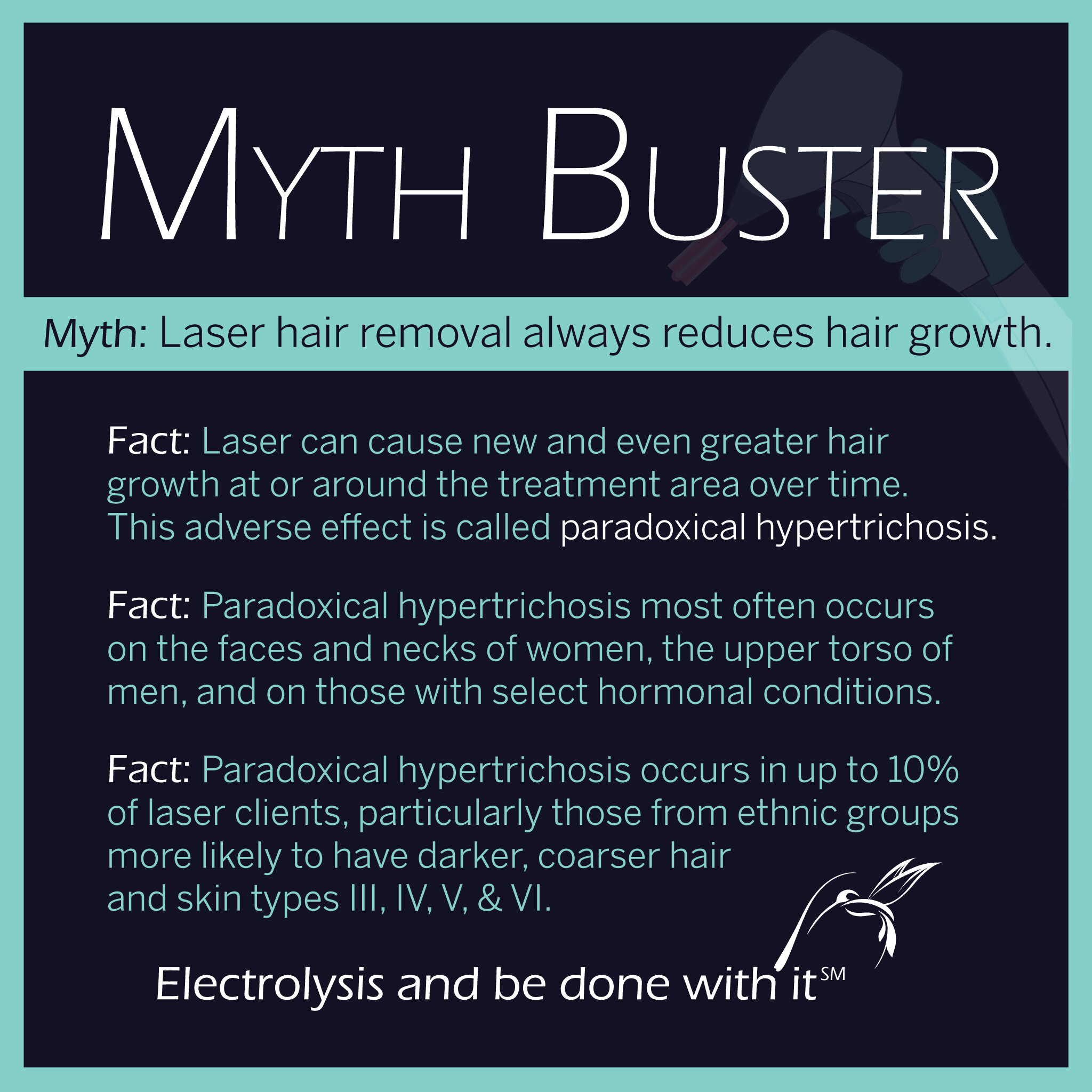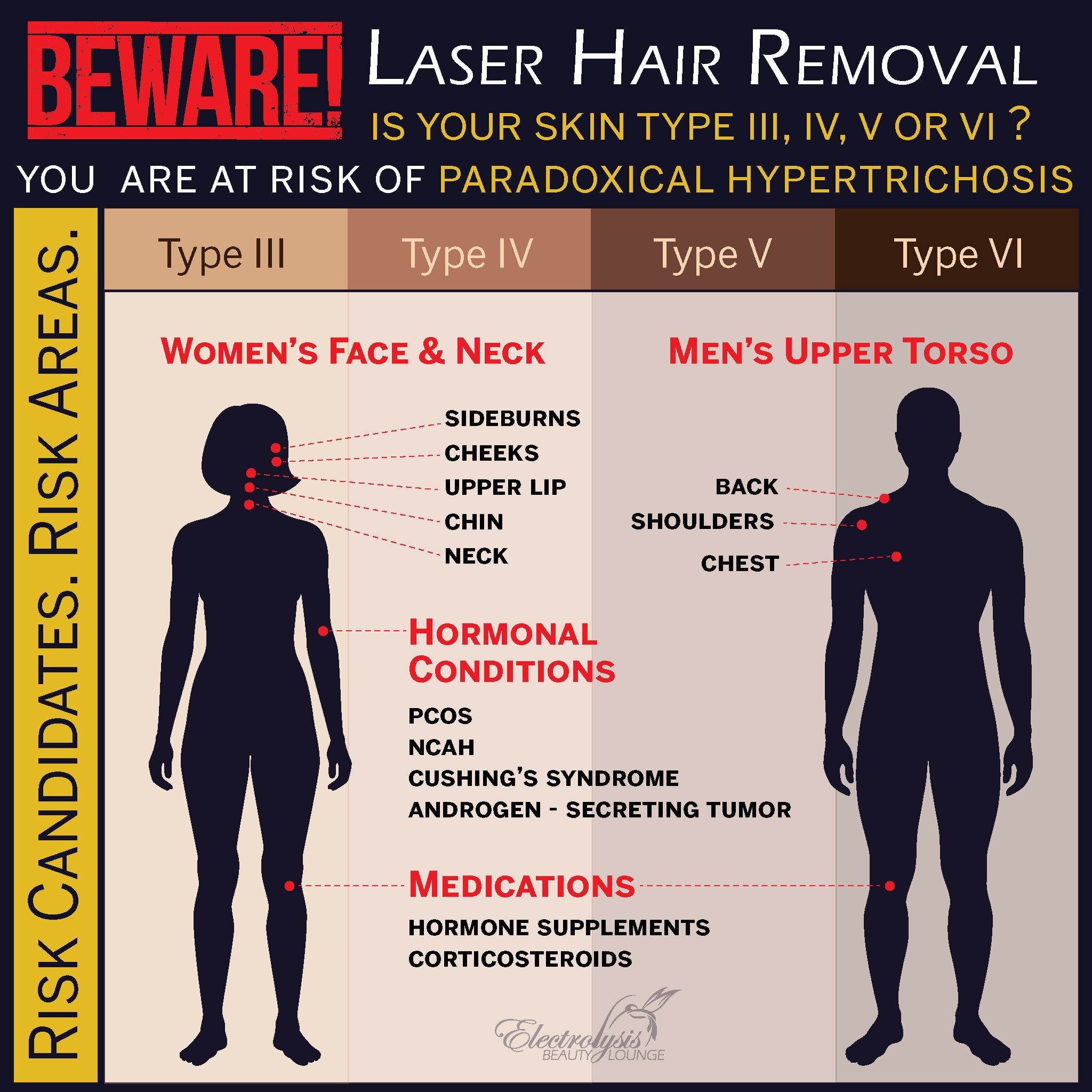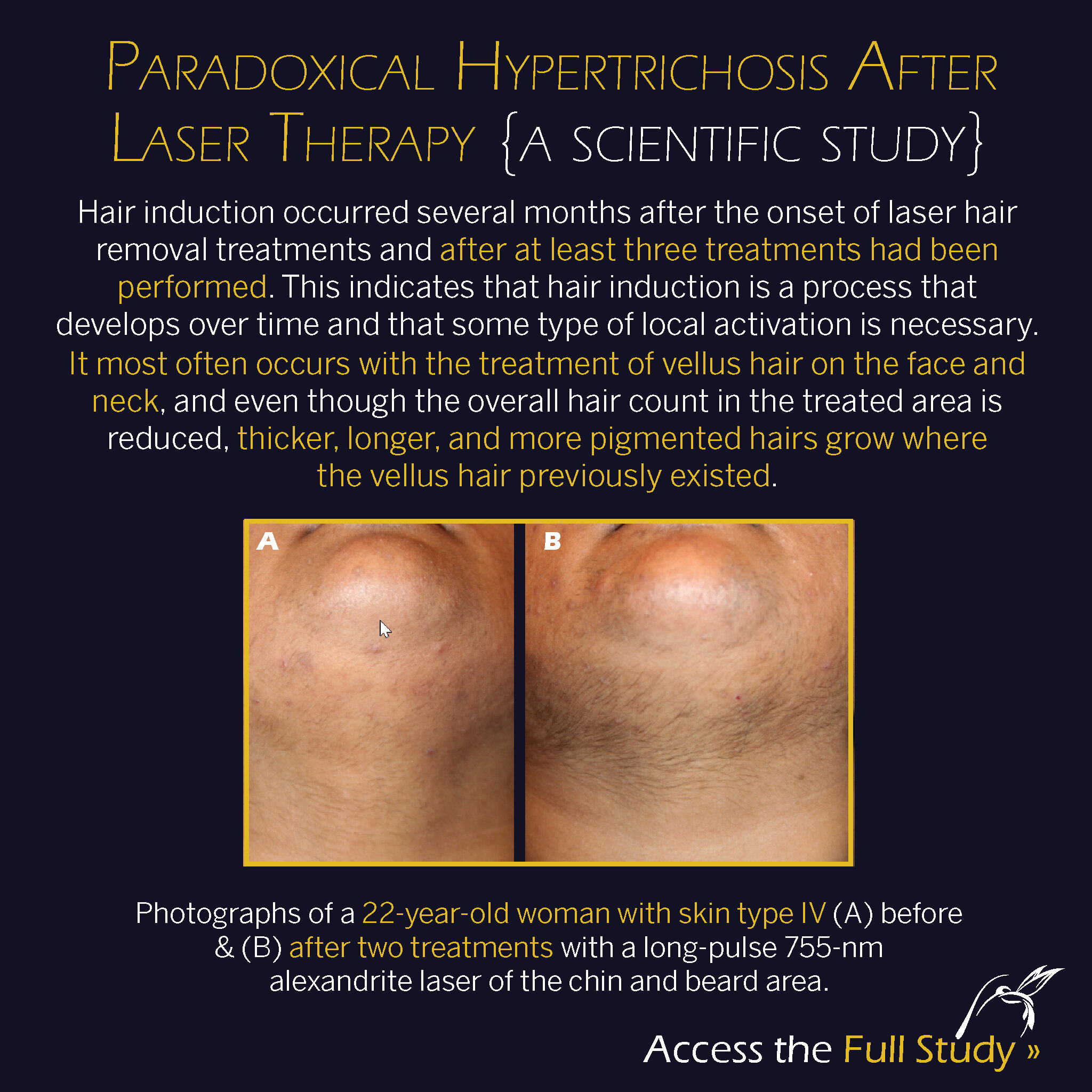Laser Hair Removal
What is it?
Hair removal lasers beam pulses of light into the hair follicle by targeting the melanin in the hair attempting to damage it. Its success rate relies on the amount of pigment in the hair as well as the amount of contrast between the hair and the skin; it is most successful on dark, thick hair. This procedure is restricted in most states, to only being administered by a medically licensed professional like a nurse or doctor because of the potential risks associated with misuse as well as the adverse effect of new hair growth called paradoxical hypertrichosis.
LASER is an acronym that stands for Light Amplified by Stimulated Emission of Radiation.
Myths about Laser
The first laser was the ruby (red) laser invented in1960. It was later manipulated to target melanin in the hair by Dr. Rox Anderson and Melainie Grossman, which was the beginning of laser hair removal (LHR). Although it was not approved by the Federal Drug Administration (FDA) until 1997, it’s not FDA approved as a permanent method of hair removal but rather a method of hair reduction; thus, many gender reassignment surgeons will only prescribe electrolysis for pre-operative care. Some insurance companies won’t cover LHR even if it is approved by a surgeon because it’s not an FDA approved method of permanent hair removal.
Permanent hair reduction is defined as, “the long-term, stable reduction in the number of hairs regrowing after a treatment regimen. The number of hairs regrowing must be stable over a time greater than the duration of the complete growth cycle of hair follicles, which varies from [18 to24 months depending on the area of the body being treated]”. source »
The FDA on hair removal methods »
How LHR was invented » Interview with inventor Dr. Rox Anderson; audio play button at top
+ Pros of Laser Hair Removal
Fast treatment time
Long-lasting results with a lifetime of maintenance treatments
Regrowth is often finer & lighter
Safe for many body parts when deemed a candidate
Makes dense body hair more manageable
Can serve as precursor to electrolysis on dense body parts like legs, underarms, and genital region
– Cons of Laser Hair Removal
Never permanent; requires ongoing maintenance over time
Imprecise, cannot target individual hair follicles and therefore effects multiple follicles at a time
Not all Lasers are as effective on blonde, red or grey hair, nor on brown to black skin tones with dark hair; can burn the skin in these cases.
Significantly reduced efficacy on thin/fine hair
Cannot be used in tattooed areas, can burn the skin and ruin the tattoo
Cannot be used on densely freckled skin, vitiligo skin, or on moles with hair in them, can burn the skin
More expensive than a permanent solution (electrolysis) over the course of a lifetime
⚠ Side Effects of Laser Hair Removal
Can stimulate "peach fuzz" to grow into thicker, darker hairs on face, neck, shoulders, chest and back. Learn more about paradoxical hypertrichosis (PH) »
Increased threat of PH on those with androgen-related hormonal imbalances » and those taking corticosteroids or hormone supplements.
Distorts follicles causing risk of ingrown hairs upon regrowth; especially on those with wavy and curly body hair
Poses burn risks to those taking photosensitive medications like antihistamines, tetracycline antibiotics, and oral contraceptives. All should be stopped at in advance of treatment and we still recommend asking your doctor before proceeding
Types of Laser Hair Removal?
All lasers in the LHR industry have limitations. Understanding them, will help you make a better informed decision when choosing LHR and a professional you can trust.
The following information is NOT exempt from the warnings we present across our digital platforms about LHR’s potential to cause paradoxical hypertrichosis » in the danger zones » of the body. It’s a general list based on how different types of laser are intended for use per the LHR industry and on beauty publisher’s media content.
We have only reported information we were able to confirm consistent messages across a minimum of three online sources, and continue to encourage all readers to continue their own research on the subject before deciding on LHR. Remember, one size never fits all.
+ Alexandrite 755nm (infrared-light systems)
- the fastest of all laser types
- works best on fair skinned people with dark hair
- ideal for treating larger body areas
- performs well on light-to-olive complexions; skin type I, II, III**
- works better on thinner hair than other systems
- performs better on axillary (under arms) than face and legs
- more painful than other systems
- can cause discoloration if used on patients with darker skin tones
+ Diode 810nm (infrared-light systems)
- more effective on coarse, dark hair than other systems
- ideal for light to tan skin; skin types I, II, III**
- performs fairly well on darker skin because of its longer wavelength; skin types IV, V, VI**
- rapid repetitions decrease treatment duration
- typically more painful than other laser systems
- performs better on axillary (under arms) than face and legs
- wavelength setting can be customized to the needs of the patient
- newer to the industry so less scientific research to back up its long-term effectiveness
+ Intense Pulse Light (IPL) 500 nm to 1200 nm (intense pulsed-light sources)
- IPLs are not lasers but rather light lamps and are less effective than lasers
- ideal on fair skinned people with dark hair; skin types I, II**
- can be customized to the patient’s skin tone but have proven studies of increased hair growth on olive to dark skin; skin types III, IV, V, VI**
- can target large areas quickly
- type of light used in most at-home devices
+ Nd: YAG 1064 nm (infrared-light systems)
- Nd stands for Neodymium, and ” YAG” is short for yttrium aluminum garnet.
- performs well on darker skin because of its longer wavelength; skin types III, IV, V, VI**
- less effective for light or fine hair when compared to other types of lasers
- works on all body parts but there's conflicting information available about whether it's ideal for treating larger or smaller areas
- performs better on axillary (under arms) than face and legs
- middle of the road in comformt among all laser systems
+ Ruby 695 nm (red-light system)
- first type of laser invented and used for laser hair removal
- works best on fair skinned people with dark hair; skin types I, II**
- poor performance on light and thin hair
- performs better on axillary (under arms) than face and legs
- it's slow repetition pulses require longer sessions so better on smaller treatment areas for those with a lower pain tolerance
** Fitzpatrick Skin Types III, IV, V & VI » should always use caution when getting Laser on known danger zones » because of the risk of paradoxical hypertrichosis » And all skin types should use caution of if they have an underlying hormonal condition » due to an androgen imbalance or are taking hormone supplements or corticosteroids.
sources: PFMAJournal » , DermaHealth Institute » , Good Housekeeping » , Skinney Med Spa » ,
“Technology is a useful servant but a dangerous master.”







